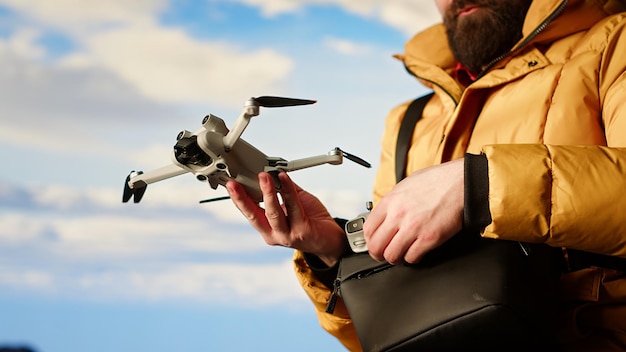
Sponsored article
The rapid proliferation of drones across various industries has necessitated advancements in technologies aimed at detection and identification. As unauthorized drone flights pose significant risks to privacy, security, and airspace management, innovative solutions have emerged to tackle these challenges effectively. This article delves into the state-of-the-art technologies that are enhancing our ability to detect and identify drones, ensuring safer skies and fortified security measures.
Emerging technologies in drone detection are revolutionizing the way unauthorized drones are identified and mitigated. Advanced radar systems now possess greater precision and range, allowing for more accurate identification of drones, even in complex environments. The integration of artificial intelligence (AI) and machine learning further enhances these capabilities by enabling systems to learn and adapt to new threats faster and more efficiently. These technologies ensure that detection systems remain effective against the rapidly evolving drone technologies. AI integration brings about the ability to process vast amounts of data in real-time, distinguishing between legitimate and rogue drones with unprecedented accuracy.
Moreover, state-of-the-art systems can detect passive RF signals, enabling discreet identification of drones and their operators without the need to emit any signals. Detect passive RF signals technology is particularly crucial for maintaining covert operations in sensitive areas. Machine learning algorithms continuously improve the detection protocols, updating libraries with over hundreds of drone models, which boosts the ability to differentiate between friend or foe effectively. These cutting-edge advancements have broadened the scope of securing airspace against unauthorized intrusions, making them a vital component of contemporary security measures.
The role of advanced technologies in drone detection and identification is becoming increasingly crucial as drones proliferate. Acoustic sensors and radio frequency technology are at the forefront of this technological evolution. Acoustic sensors work akin to sonar systems, listening for the unique noise signatures emitted by drone rotors. By capturing these acoustic footprints, they contribute significantly to drone identification, enabling systems to recognize drone types based on their sound profiles. On the other hand, radio frequency technology analyzes the radio signals transmitted by drones. This frequency analysis is key to detecting active drones and differentiating between various models by their specific RF signatures. Together, these technologies play a vital role in maintaining the security of restricted airspaces by reliably identifying unauthorized drones.
Sensor integration is crucial for enhancing the accuracy and reliability of these detection systems. Leveraging both acoustic and RF data offers a multi-layered approach to drone identification. By combining these technologies, systems can:
Such sophisticated systems are essential for ensuring the safety and security of airspace, particularly in areas where privacy and security are paramount.
The challenges in drone identification and mitigation are increasingly complex as drone technology continues to advance. One of the primary difficulties lies in accurately identifying unauthorized drones, which often involves distinguishing them from friendly or commercial drones operating in the same airspace. This task is further complicated by false positives, where detection systems mistakenly identify benign drones as threats, leading to potential disruptions and unnecessary countermeasures. The sophisticated technology required for precise differentiation is still under development, making it an ongoing challenge for security experts to create reliable identification frameworks.
Mitigating potential threats from unauthorized drones involves another layer of complexity. Security protocols need to address vulnerabilities like signal jamming, which can both disrupt legitimate operations and be exploited by malicious actors to conceal their activities. Developing comprehensive security protocols that can respond effectively while minimizing collateral damage remains a significant hurdle. Innovations are needed to improve drone detection systems’ accuracy and resilience, ensuring that they can adapt to evolving drone technologies and emerging threats.